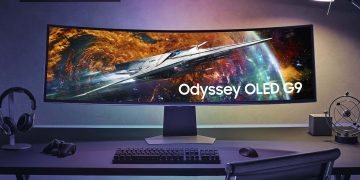According to recent reports, Sony is in the process of developing a new portable gaming console, setting its sights on competing with the likes of Nintendo and Microsoft. Unlike the PlayStation Portal—a remote play device that requires connectivity—this new handheld will allow for uninterrupted PlayStation 5 gaming on the go, regardless of where you are. However, sources indicate that the project might still be several years from reaching gamers’ hands, giving Sony ample opportunity to tweak or even shelve the idea altogether.
This situation mirrors remarks made by Microsoft CEO Phil Spencer, who noted that creating a portable Xbox device would be a lengthy endeavor. As it stands, both tech giants are eyeing Nintendo, which currently dominates the handheld gaming landscape. Next year could see the launch of Nintendo’s much-anticipated next-gen Switch.
When approached for comment, a Sony spokesperson chose to stay tight-lipped about the company’s plans.
The realm of portable gaming has made significant strides in recent years, thanks in part to innovations like Valve’s Steam Deck and its upgraded OLED iteration. This surge in popularity has prompted companies such as Asus, Lenovo Legion, Logitech, and MSI to jump into the fray. A major advantage for both Microsoft and Sony is their expansive game libraries and the potential to attract new intellectual properties and developers—from indie creators to AAA studios—whether through exclusivity deals or cross-platform offers.
Creating a handheld capable of running PlayStation 5 titles presents its own challenges, requiring sophisticated hardware and carefully optimized firmware. As Sony’s project is still in the design phase, it’s entirely feasible that the company might alter its course or halt the project entirely.
The State of Portable Gaming: Then and Now
Sony isn’t new to the portable gaming scene. They’ve previously released the PlayStation Portable, PSP Vita, and PSP GO years ago. As Bloomberg noted in an earlier report, the PlayStation Portal was initially intended as a standalone device. Instead, it became a remote gaming gadget with an 8-inch display, streaming games from a linked PlayStation 5 via WiFi.
Even though Sony tasted success with the PSP, the company now faces stiff competition from others. Furthermore, Sony must also contend with the rise of cloud gaming services, which allow gaming regardless of device—spearheaded by Nvidia’s GeForce Now and Microsoft’s Xbox Cloud Gaming.
Venturing into the portable market brings numerous advantages, chief among them being access to a broader audience that might not engage with traditional gaming on PCs, clouds, or consoles. Should Sony opt not to move forward with a new handheld, it’d stand as the sole gaming giant abstaining from the lively handheld market.














































